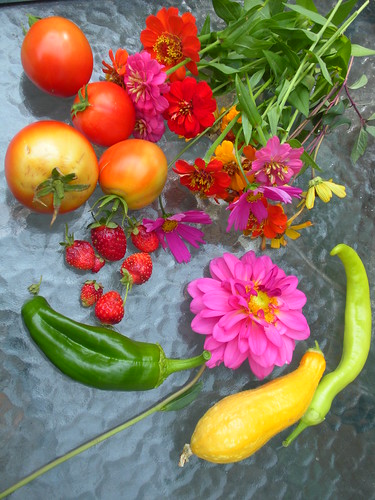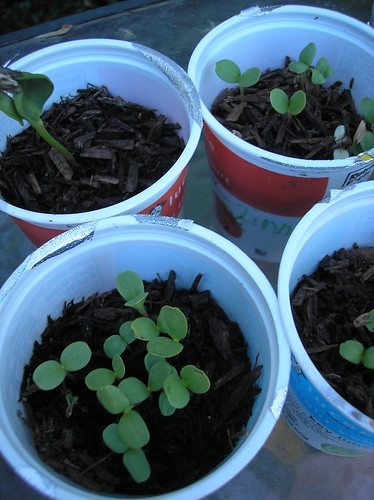
For this challenge we were to choose a tree to study for a year, observing it in each season to notice the changes. My son and I used the Tree Study sheet to prompt our observations but in the Handbook of Nature Study on page 625 there is a section on "Spring Work" to use with your own tree.
My son has suddenly taken an interest in basketball and is bouncing a ball in every spare moment. I tore him away yesterday afternoon to have him to pick his tree and do a quick observation. He picked one of the sweet gum trees that we have growing just off our back deck. We have four of these trees planted as a shade break for the hot summer afternoons. They are perfect for shading us for the late summer sun and then they loose all their leaves in the winter and allow the sun to hit our house in the winter to make it light and cheery. They also turn the most magnificent colors in the autumn and make the view out our back windows very colorful and enjoyable to look at....I can see them as I wash dishes at the kitchen sink. they are not native to our area but they are very popular as tree plantings in neighborhoods and in yards for shade and their beauty.
So here is a copy of his notebook page for his journal. I am going to slip it into a sheet protector and hopefully the leaf will survive for the year that we have ahead. At least we will have the scan of the page so we can compare on the computer if we need to.

Here is a little sampling of photos from his tree taken on May 3, 2008.


(note the bouncing basketball....I don't always get rapt attention for nature study)


(click this photo and you will see an ant on the bark)

You can join the Green Hour Challenges at any time. Look on the sidebar of this blog for links to all the challenges.
Barb-Harmony Art Mom




